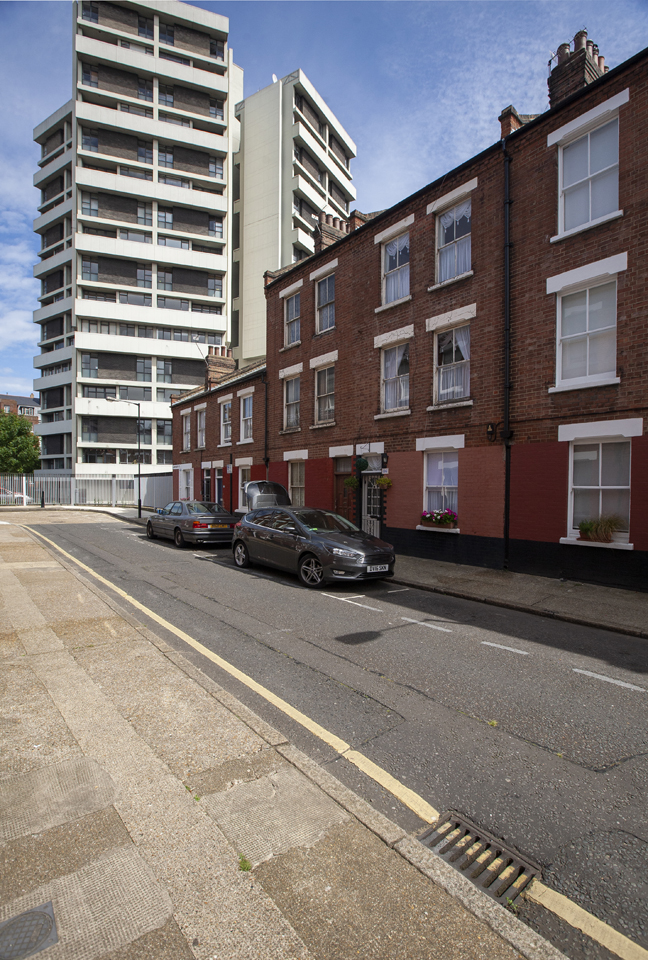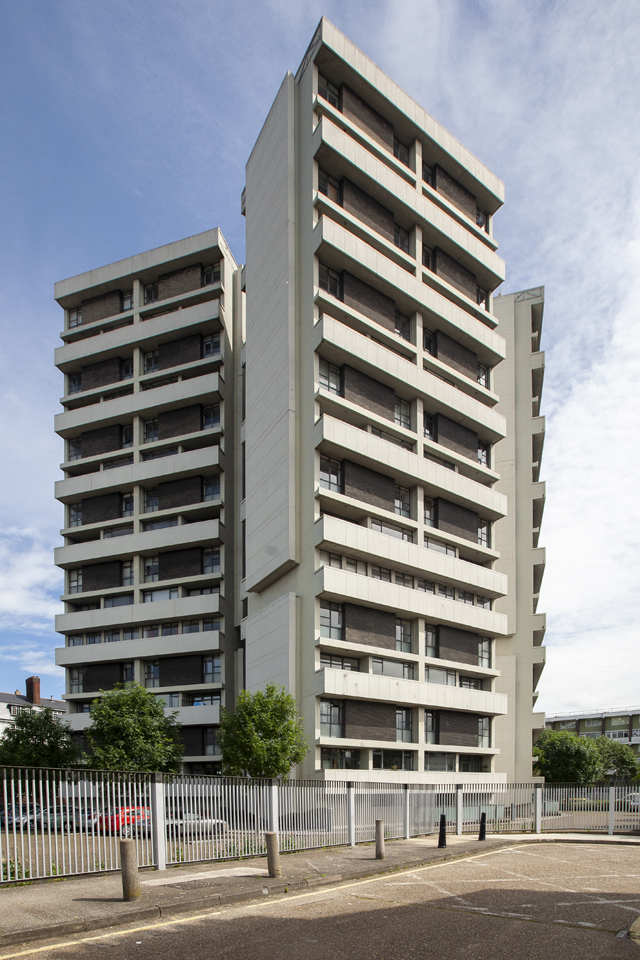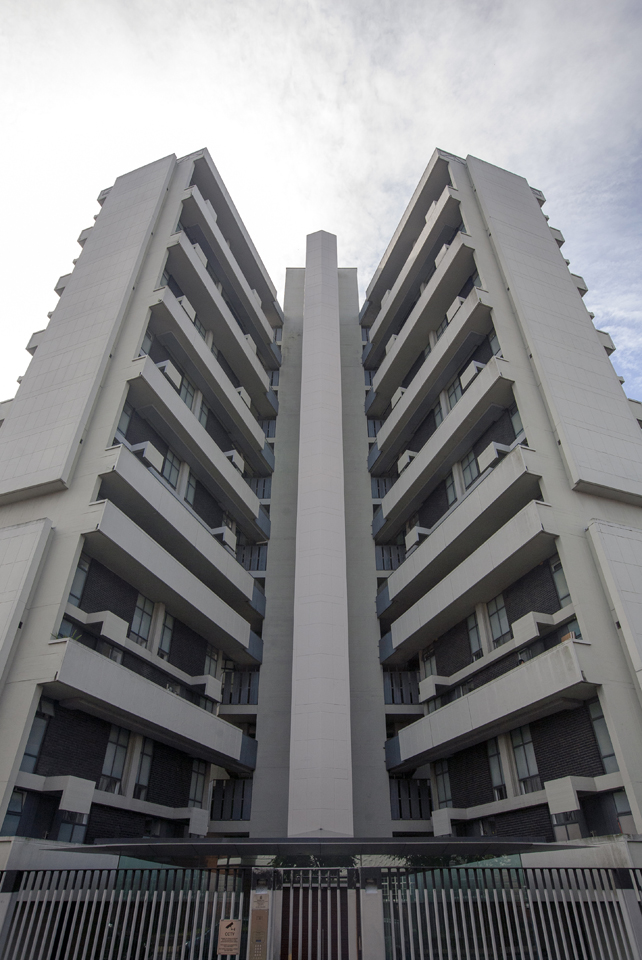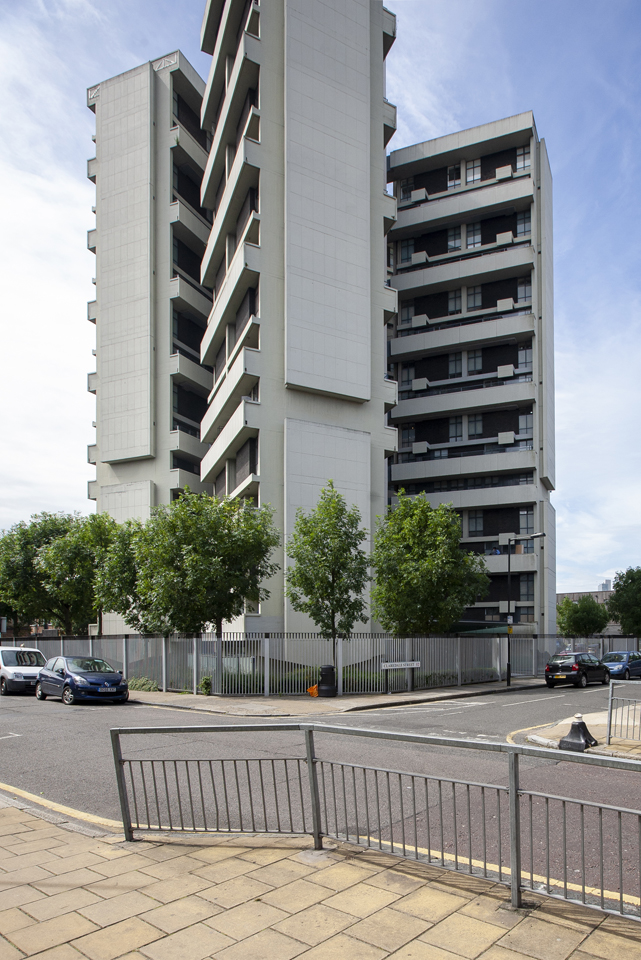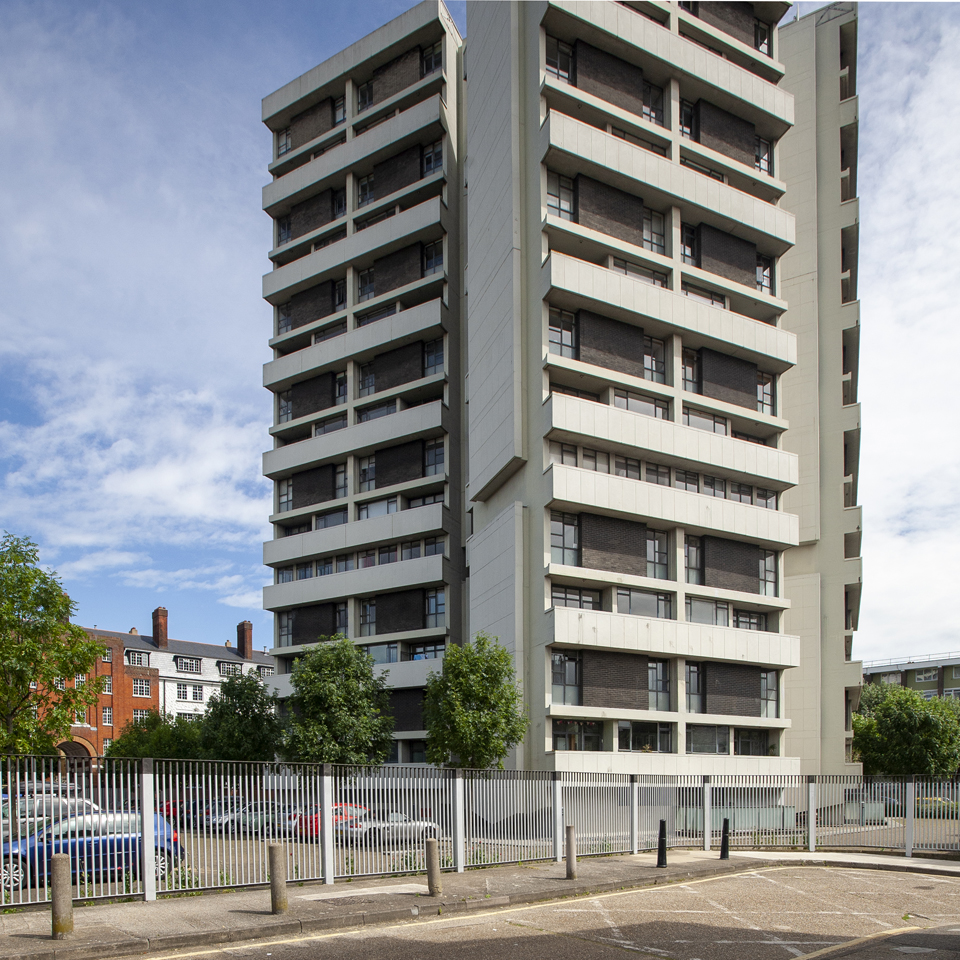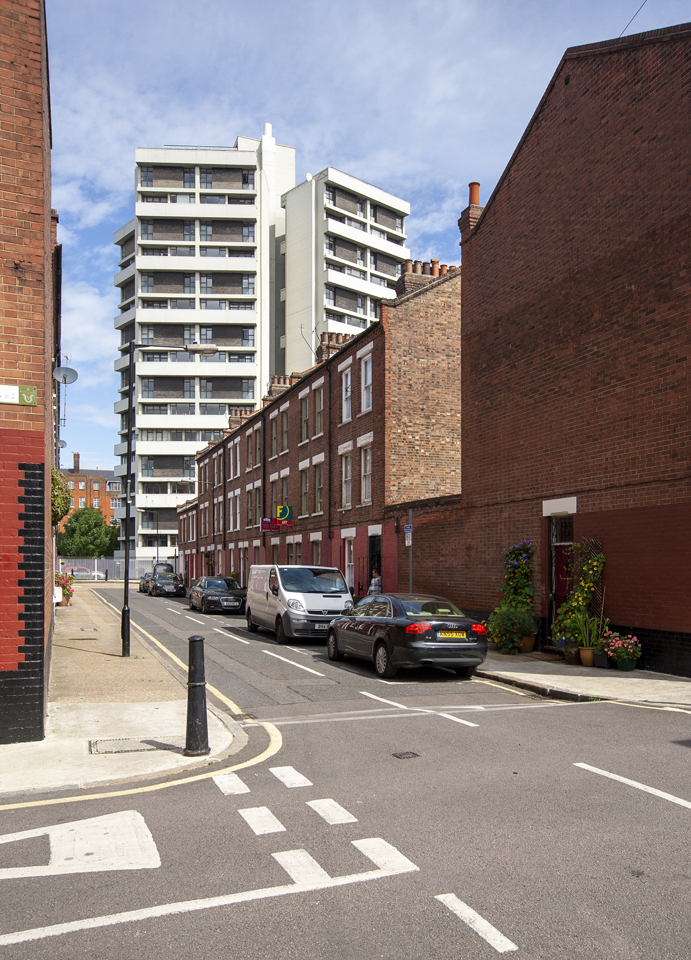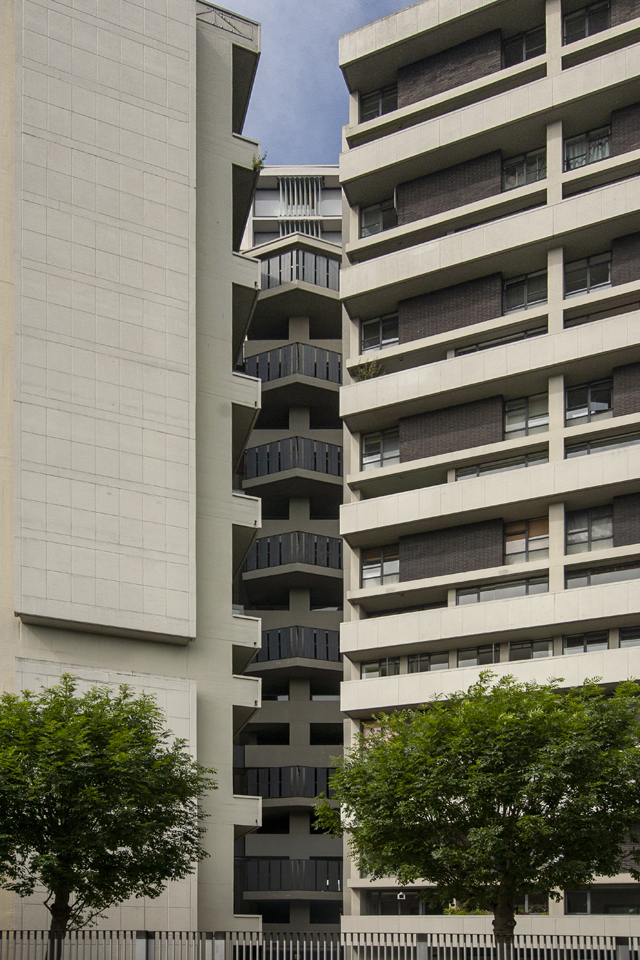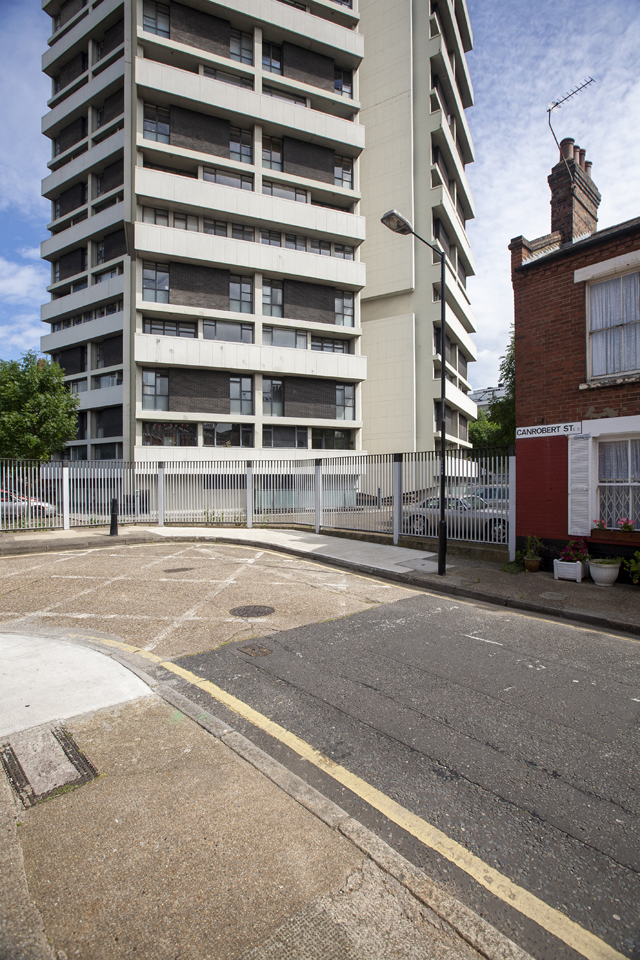Keeling House
1957
In his monograph on Lasdun, William J R Curtis makes a case for the humanism of Lasdun's approach as manifest in his 'cluster blocks' at Bethnal Green, of which Keeling House was the second [1]. The ambiguity in figure-ground created in the mixture of 45 and 90 degree geometries 'implied a particular personal direction' for Lasdun that drew on early modernism, but also established ideas of his own. Having worked for Tecton and for Wells Coates, Lasdun was versed in typical orthogonal ways of ordering plans, but in his clusters he explored more organic diagramming of space and a more sculptural approach to form. Keeling House clearly references Tecton in its materials, but is far from their orthogonal expression in form. The plan of Keeling House is only symmetrical on one axis and, as such, reading it from its perimeter in relation the surrounding streets its appearance is rich in variety. At only 15 storeys, it is a relatively modest block and does not overwhelm the nearby surviving terraced streets of East London. The provision of light was a core concern of Lasdun and his plan allowed daylight to enter living rooms and bedrooms in every cluster. The planning of cluster blocks removed the need for extensive shared corridors that slab blocks relied upon. It also helped to isolate the noise from stairwells, lifts and rubbish disposal. As well as attention in the architectural press, Keeling House drew commentary from sociologist, Paul Thompson who considered that 'the architect's real intention (and achievement) was to combine in one building the aesthetic effects of an East End backyard and a Neapolitan tenement' [2]. The mixture of flats and maisonettes is expressed in the elevations, in which solid balconies alternate with the narrower horizontals of the bedroom floors between, with the fifth floor flats picked out interrupting the repeating rhythm. White balconies, Portland stone cladding and brick panels were familiar finishes in post-war London housing, but rarely were they composed like this.
[1] Curtis, WJR (1994) Denys Lasdun: Architecture, City, Landscape (London: Phaidon)
[2] Thompson, P. (1963) Architecture or Social Service? (London: Young Fabians)
